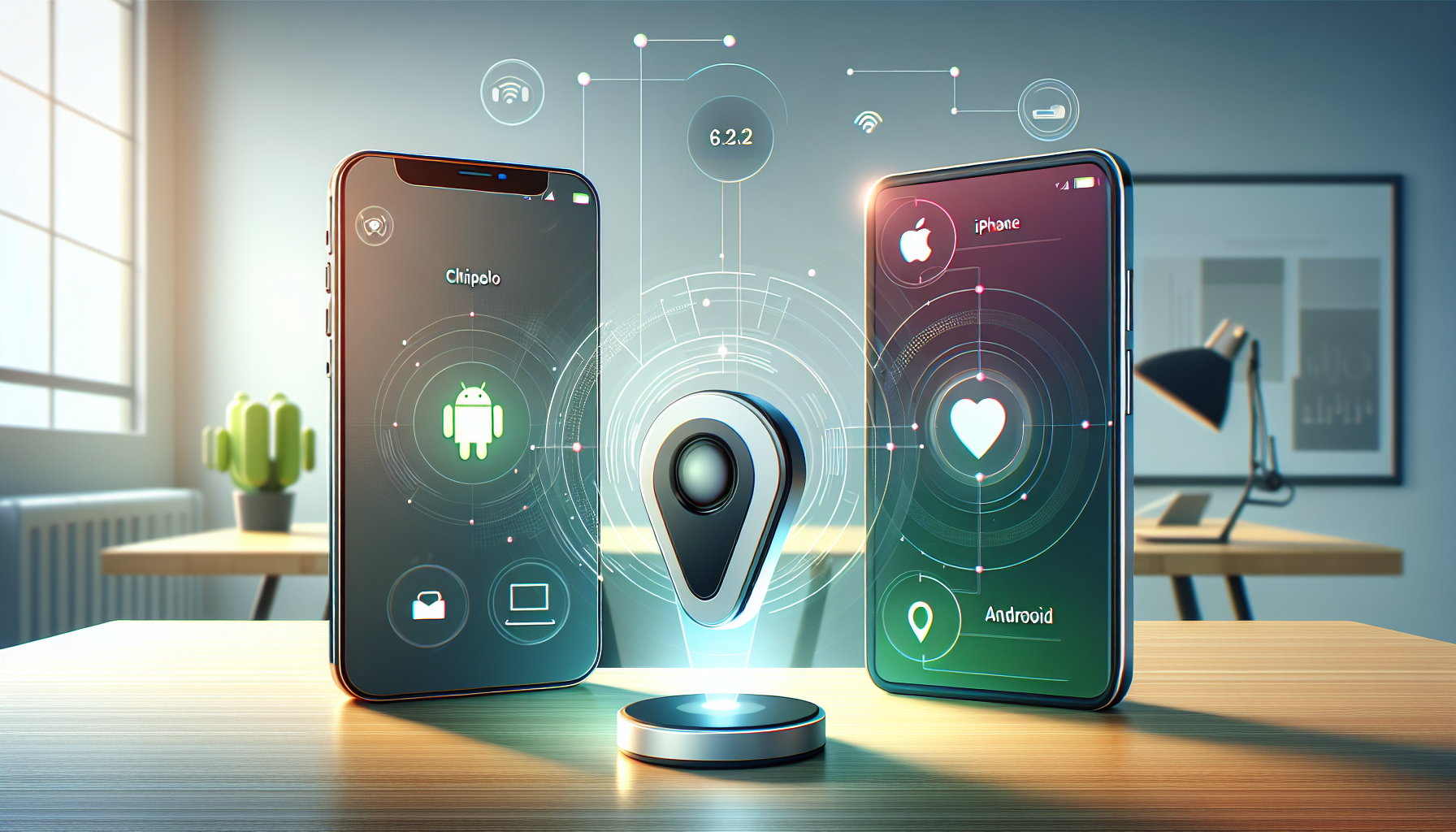Cross-Platform Tracking: Chipolo's New Device Bridges Apple and Google Ecosystems
In a significant development for the item-tracking market, Chipolo has unveiled its latest product that works with both Apple's Find My network and Google's Find My Device network simultaneously. This cross-platform compatibility represents a notable shift in how tracking devices are designed and marketed, potentially offering users more flexibility regardless of their chosen mobile ecosystem.
Announced on April 14, 2025, Chipolo's new tracker eliminates the previous need for consumers to choose between Apple or Google-compatible versions, streamlining the company's product lineup while expanding its utility across different platforms.
Breaking Down the Technology
Chipolo's new tracker represents a technical achievement by supporting multiple tracking protocols in a single device. Previously, consumers needed to select a specific model depending on their smartphone platform of choice – an Apple-compatible version that worked with the Find My network or an Android-compatible version for Google's Find My Device network.
The dual compatibility works through the device's ability to broadcast signals that can be interpreted by both Apple and Google's respective networks. This means that a lost Chipolo can be located using either an iPhone or an Android device, dramatically increasing the network of devices that can help locate a missing item.
Key technical features of the new Chipolo tracker likely include:
- Bluetooth Low Energy (BLE) technology that's compatible with both platforms' specifications
- Software that can communicate with both Apple's Find My app and Google's Find My Device app
- Encryption standards that satisfy both companies' security requirements
- Sufficient battery life to support dual broadcasting capabilities
- Physical design that meets both platforms' certification requirements

While Apple's AirTags and Samsung's SmartTags are designed exclusively for their respective ecosystems, Chipolo's cross-platform approach gives it a unique position in the market. This design philosophy aligns with increasing consumer demands for interoperability between tech ecosystems, reducing the lock-in effect that has characterized much of consumer technology.
Market Impact and Competitive Positioning
Chipolo's strategic move positions the company uniquely in the item tracker market, which has become increasingly competitive since Apple's entry with AirTags in 2021. By supporting both major tracking networks, Chipolo differentiates itself from both Apple and Samsung, whose trackers are designed primarily for their own ecosystems.
This cross-compatibility offers several competitive advantages:
Broader Market Appeal: Households with mixed devices (some Apple, some Android) can standardize on a single tracker type.
Future-Proofing: Users who switch between platforms don't need to replace their trackers when changing phones.
Enhanced Finding Capability: Items can be located by a larger network of devices, potentially improving the chance of recovering lost items.
Simplified Inventory: For retailers and Chipolo itself, maintaining one SKU instead of platform-specific versions simplifies logistics and inventory management.
For Chipolo, which has been in the Bluetooth tracker market since before Apple's entry, this represents an effort to carve out a distinct value proposition in a space increasingly dominated by tech giants. Rather than competing directly on technical specifications or price alone, Chipolo is leveraging flexibility and cross-platform compatibility as key selling points.
The Evolution of Finding Networks
The development of item-finding networks has been an interesting technological evolution that leverages the vast number of smartphones in circulation to create passive finding capabilities. Apple's Find My network and Google's Find My Device network both operate on similar principles: when an item is lost, it broadcasts encrypted signals that can be detected by nearby devices, which then relay the location to the owner through secure channels.
Both networks have faced privacy scrutiny and have implemented various safeguards:
- End-to-end encryption of location data
- Anti-stalking protections to prevent unwanted tracking
- Randomized identifiers that change regularly
- User notifications about unknown trackers moving with them
The cross-compatibility of Chipolo's new device raises questions about how these privacy features will operate across platforms. For instance, will Apple's anti-stalking features detect a Chipolo primarily operating on Google's network, and vice versa? These considerations highlight the complexity of building secure, privacy-respecting systems in a cross-platform environment.
The expansion of these finding networks also points to the increasing integration of IoT (Internet of Things) capabilities into our daily lives. What began as a way to find lost keys has evolved into comprehensive location tracking systems with far-reaching implications for personal property management, logistics, and even personal safety.
Industry Trends: The Push for Interoperability
Chipolo's dual-network tracker reflects a broader trend toward greater interoperability in consumer technology. After years of walled gardens and ecosystem lock-in strategies, market forces and regulatory pressure are pushing companies toward more open approaches.
Several factors are driving this shift:
Regulatory Pressure: Governments worldwide, particularly in the EU with its Digital Markets Act, are requiring major tech platforms to allow greater interoperability.
Consumer Demand: Users increasingly expect their devices and services to work together regardless of brand.
Competitive Differentiation: As primary markets saturate, companies find value in reaching users on competing platforms.
Industry Standards: Development of cross-platform standards makes interoperability technically easier to implement.
We've seen this trend across various technology categories: messaging apps increasingly support cross-platform communication, smart home devices work with multiple voice assistants, and now tracking devices support multiple finding networks.

Apple and Google have even collaborated on a joint proposal for tracker detection alerts, allowing their respective devices to detect unwanted trackers from either ecosystem. This collaboration, announced in 2023, signaled recognition that cross-platform compatibility in tracking technology addresses important safety concerns.
Chipolo's implementation of dual-network compatibility extends this principle to the consumer benefits side, allowing tracker owners to benefit from both networks' coverage.
Implications for Business and Enterprise Users
While consumer applications often drive headlines for tracking devices, the business implications of cross-platform trackers are significant. Organizations with mixed device environments—increasingly common as BYOD (Bring Your Own Device) policies proliferate—can now standardize on a single tracking solution regardless of whether employees use iOS or Android devices.
For enterprises that track assets, equipment, or inventory, this cross-compatibility simplifies deployment and management. IT departments don't need to maintain separate pools of trackers for different platforms, and employees can use their existing devices to locate company assets regardless of platform.
Additionally, the expanded coverage provided by access to both finding networks potentially improves recovery rates for lost or stolen equipment, a meaningful benefit when tracking high-value assets.
What This Means for Binbash Consulting Clients
For organizations working with Binbash Consulting, Chipolo's cross-platform approach aligns with our philosophy of building flexible, future-proof technology solutions. We consistently recommend technologies that reduce platform lock-in and provide operational flexibility, and these new trackers exemplify that approach.
Our clients in sectors like healthcare, field services, and logistics—who often manage mixed-device fleets and valuable equipment—may find particular value in standardizing on cross-compatible tracking solutions. The ability to leverage both major finding networks increases coverage and improves the chances of recovering lost items, potentially reducing replacement costs and operational disruptions.
For clients implementing IoT solutions or asset management systems, these dual-network trackers can be integrated into broader management platforms without concerns about underlying device compatibility. This simplifies both initial deployment and ongoing management, reducing total cost of ownership.
As we continue to help organizations build resilient, efficient technology infrastructures, we'll be evaluating how these cross-platform tracking solutions might integrate with existing asset management systems, custom applications, and operational workflows.
Conclusion
Chipolo's introduction of a tracking device compatible with both Apple and Google's finding networks represents more than just a new product announcement—it reflects the ongoing evolution toward greater interoperability in consumer and enterprise technology. By bridging these previously separate ecosystems, Chipolo creates value through flexibility and expanded coverage.
As the market for location tracking technology continues to mature, we expect to see further innovations in cross-platform compatibility, enhanced privacy features, and specialized applications for various use cases. For organizations and individuals alike, these developments promise greater choice and functionality in how we keep track of the things that matter.
At Binbash Consulting, we'll continue monitoring these developments and helping our clients leverage new technologies that promote flexibility, security, and operational efficiency across their technology environments.
